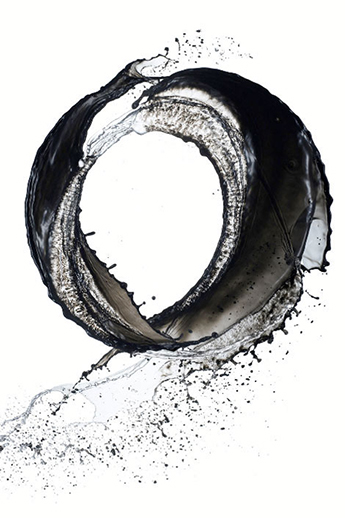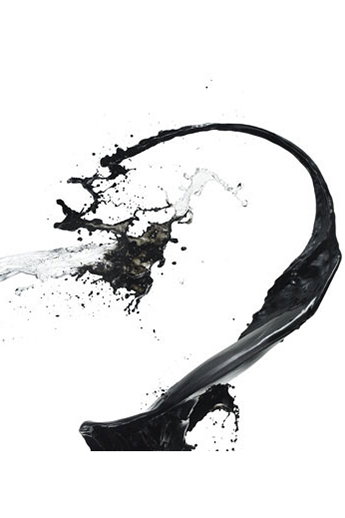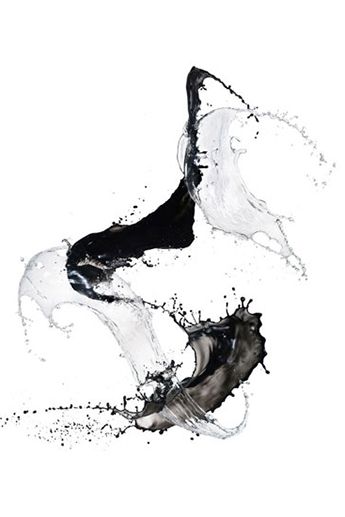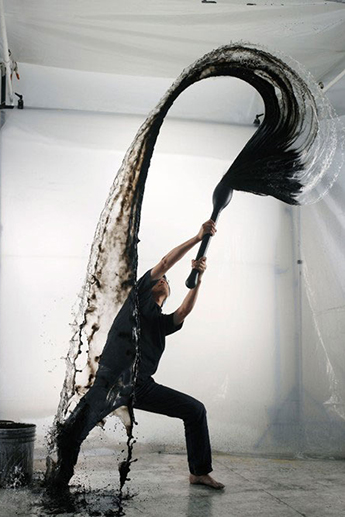Spirit in the Sky: Shinichi Maruyama's Kusho
Shinichi Maruyama hurls black India ink into water (or visa versa) and photographs the millisecond that these two liquids collide. Capable of capturing this phenomenon at a 7,500th of a second, Maruyama takes full advantage of a recent advancement in strobe light technology which can record physical events faster than the naked eye can perceive them. In the series Kusho, which means «writing in the sky,» Maruyama’s goal is to arrest in space and time the sublime intersection of two different media before they merge into one. In some respects, the project resembles a scientific experiment, but in Maruyama’s artistic hands, the total action becomes a form of Shodo (Japanese calligraphy) performance — with the gesture executed in the air rather than on the flat surface of the paper.
Maruyama’s career in photography began in his native Japan. Born in Nagano, in 1968, Maruyama recorded images of this wondrous mountain region while still in high school. After graduating from college, he joined Hakuhodo Photo Creative, an advertising company, where he honed his skills. In 2001, Maruyama published two books, The Spiti Valley and Spiti, both dedicated to documenting life in Tibet. This direction shifted his creative interests from the material to the spiritual, fueled by his ability to harness new technological developments. Maruyama moved to New York in 2003.
The Kusho series announces Maruyama’s crossover from sensitive photographer to visionary artist through this marriage of photography and a Shodo-esque improvisational experience. In his essay, Maurice Berger points out the artist’s childhood study of Shodo. Maruyama explained: «As a young student, I often wrote Chinese characters in sumi ink. I loved the nervous, precarious feeling of sitting before an empty white page, the moment before my brush touched the paper. I was always excited to see the unique result of each new brushing.»
This happy anticipation in front of a virgin space reminds me of a recent radio interview with one of Japan’s greatest living poets, Shuntaro Tanikawa, wherein this artist described how he sits in front of his computer screen «emptying» himself in order to arrive at a word which will launch the trajectory of his poem. Maruyama’s Kusho can be understood as visual poetry — perhaps haiku in action: brief, concise and precise in its evocative power.
In essence, Maruyama’s «writing in the sky» beckons the viewer to pay attention to the life force made visible in the interpenetration of ink and water. This particular choice of opposites — opacity and translucence, black and white — represents a meditation on the difference between merging and submerging, of being and nothingness, of self-expression and self-abnegation.
Above all, Maruyama’s photographs are about taking risks — risks with the ink and water, risks with photographic techniques, and risks with a new approach to art. How encouraging to see that taking risks can be a beautiful thing.
Source: Shinichi Maruyama







